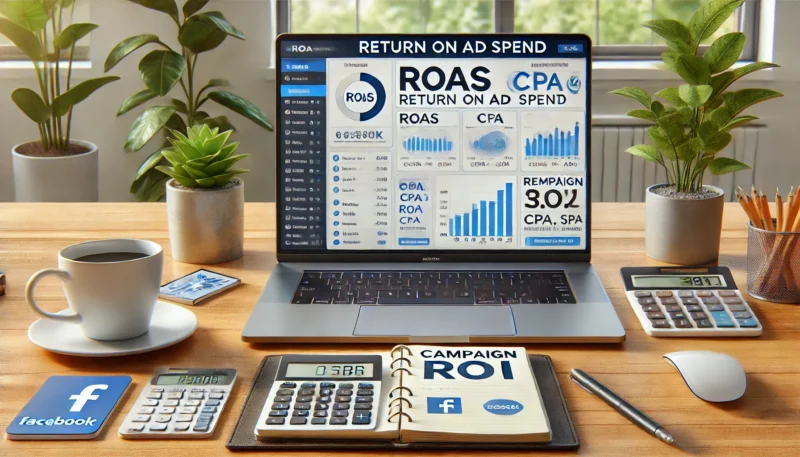In digital advertising, one metric reigns supreme when it comes to measuring the true impact of your ad spend: ROAS — Return on Ad Spend.
Whether you’re running Google Ads, Meta campaigns, TikTok, or native ads, knowing your ROAS helps you determine what’s profitable, what’s not, and where to invest next.
In this guide, you’ll learn exactly what ROAS is, how to calculate it, what a “good” ROAS looks like, and how to improve yours across your campaigns.
What Is ROAS?
ROAS (Return on Ad Spend) is a metric that tells you how much revenue you generate for every dollar spent on advertising.
ROAS Formula:
ROAS = Revenue from ads / Cost of ads
Example:
If you spent $1,000 on ads and made $5,000 in sales, your ROAS is:
$5,000 / $1,000 = 5.0
That means you earned $5 for every $1 spent.
ROAS vs ROI: What’s the Difference?
-
ROAS measures return relative to ad spend only
-
ROI measures overall profit, factoring in costs like fulfillment, payroll, tools, etc.
If you’re focused on media buying and campaign performance, ROAS is the metric you’ll use most.
What Is a “Good” ROAS?
It depends on your business model and margins. But here are general benchmarks:
| Industry | Good ROAS Range |
|---|---|
| eCommerce | 2x – 4x |
| Digital Products | 3x – 10x |
| Lead Gen | 2x – 5x |
| Local Services | 3x – 6x |
| Info Products | 4x – 8x |
Rule of thumb:
If your break-even ROAS is 2.5, anything above that is profit.
How to Track ROAS
1. In Your Ad Platforms
-
Meta Ads: Enable purchase/conversion events via Meta Pixel
-
Google Ads: Use conversion tracking and assign monetary values
-
TikTok/LinkedIn: Similar setup via pixel or server-side tracking
✅ You must pass purchase values to your pixel/conversion events for accurate ROAS data.
2. With Google Analytics (GA4)
GA4 lets you compare revenue by traffic source, campaign, UTM, and more.
Use the Advertising > Performance tab or build custom reports under Explore.
3. With Third-Party Tools
Use platforms like:
-
Triple Whale (for eCommerce)
-
Wicked Reports
-
SegMetrics
-
Northbeam
-
Hyros
These tools give you multi-touch attribution and deeper ROAS insights across platforms.
Why Your ROAS Might Be Low
-
Poor ad creative → Low CTR
-
Weak landing page → High bounce rate
-
Slow load time → Lost conversions
-
Bad targeting → Irrelevant clicks
-
Low offer appeal → Visitors don’t act
-
No retargeting → Cold traffic goes cold forever
How to Improve Your ROAS
1. Optimize Your Funnel
Look beyond the ad — your landing page, checkout process, and follow-up sequence all impact ROAS.
✅ Test faster pages, clearer CTAs, and simpler forms.
2. Refine Audience Targeting
Focus on audiences most likely to convert:
-
Retargeting warm leads
-
Lookalikes based on converters
-
High LTV customer segments
-
Geographic or behavioral filters
3. Use Better Creative
Ads that stop the scroll = lower CPC and higher conversions.
✅ Try:
-
Short-form videos
-
Bold headlines
-
UGC (user-generated content)
-
Before-and-after visuals
-
Testimonials and case studies
4. Increase Average Order Value (AOV)
More revenue per customer = higher ROAS.
✅ Test:
-
Bundles
-
Upsells and cross-sells
-
Free shipping threshold
-
Volume discounts
5. Eliminate Waste
Cut spend on:
-
Keywords with low conversion rates
-
Ad sets with high CPMs
-
Campaigns over frequency threshold (ad fatigue)
✅ Reallocate budget to top performers weekly.
6. Add Post-Purchase Email & SMS
Drive repeat sales and LTV (Lifetime Value) through automation.
✅ A second or third purchase improves ROAS significantly without more ad spend.
Final Thoughts: Scale What’s Profitable
ROAS isn’t just a vanity number — it’s your north star for profitable growth.
Track it consistently. Know your break-even point. And use it to make decisions on what to cut, what to scale, and where to test next.
High ROAS = high leverage.

